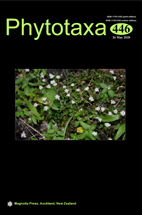Abstract
Basidiocarps of Phylloporia are used as a source of natural medicine in China mainly in Shandong Province. Although the species diversity of Phylloporia has been well-studied worldwide, especially in China, the species identities of the medicinal basidiocarps are still unconfirmed. In this study, we sampled basidiocarps of Phylloporia from Shandong Province, China. On the basis of morphological and phylogenetic evidence as well as host-tree information, it is clarified that Phylloporia lonicerae on Lonicera japonica is the most widely used medicinal species of this genus, P. fontanesiae on Fontanesia fortunei is rarely used, and P. pulla on Pyrus is potentially used. The taxonomical status of these three species is briefly discussed, and P. lonicerae and P. pulla originally described from outside of China are described with illustrations based on specimens from Shandong Province, China. This clarification is crucial for medicinal studies and potential industry development of Phylloporia species.

